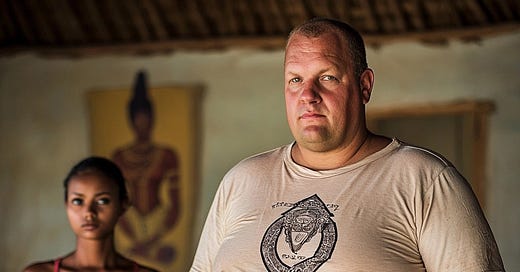The Democratization and Commercialization of Yoga & Tantra
How Ancient Spiritual Practices Became Modern Wellness Trends
The commercialization of yoga and tantra is a fascinating, yet complex topic. The history of yoga, for instance, dates back thousands of years. It’s a practice deeply rooted in Indian philosophy, and its original purpose was spiritual development, not physical fitness or relaxation.
Yoga was first brought to the West by Swami Vivekananda in the late 19th century, specifically in 1893 when he was invited to speak at the Parliament of the World’s Religions in Chicago. Vivekananda’s introduction of yoga and Vedanta philosophy to the Western world laid the foundation for what would eventually become a global phenomenon. Even today, his influence can be seen in places like the Vedanta Society in New York.
Fast forward to the 20th century, and we see the rise of other influential figures such as Maharishi Mahesh Yogi, who introduced Transcendental Meditation (TM) to the West in the 1950s. He gained worldwide fame as the guru of The Beatles in the 1960s, which significantly boosted the popularity of TM and yoga in general. David Lynch, the filmmaker, is another notable disciple of Maharishi, and he continues to promote TM to this day.
Then there was Bikram Choudhury, the man behind Bikram Yoga, also known as Hot Yoga. He developed this intense style of yoga in the 1970s, which involves practicing in a room heated to approximately 105°F (40.6°C). While Bikram Yoga became incredibly popular, especially in the United States, Choudhury himself faced numerous legal issues and controversies, tarnishing his legacy. Nonetheless, his contribution to the commercial aspect of yoga cannot be denied.
Osho, formerly known as Bhagwan Shree Rajneesh, was another Indian guru who played a significant role in commercializing Indian spiritual practices in the West. Osho’s teachings, which often combined elements of yoga, meditation, and tantra, attracted a global following. His movement, however, also faced legal troubles and scandals, especially in the United States. Osho’s ashram in Pune, India, remains a popular destination for spiritual seekers from around the world.
It’s important to note that the commercialization of yoga wasn’t solely driven by Westerners. Indian gurus themselves contributed to making yoga a global business. What began as a spiritual discipline has now transformed into a multi-billion-dollar industry, with yoga studios, retreats, apparel, and accessories available worldwide.
A similar transformation occurred with tantra. Tantra, originally an eclectic and diverse set of spiritual practices in India, has been significantly altered in its journey to the West. Today, particularly in Germany, tantra is often synonymous with tantric massage—a far cry from its complex origins. Traditional tantra in India involves a variety of practices, including rituals, meditation, and the worship of female deities like the Mahavidyas and the Nityas. However, in the West, and especially in Germany, tantra has been rebranded as a form of bodywork, often with a focus on sexual healing and therapy.
In Germany, the concept of tantra has been particularly commercialized. Many Germans associate tantra with sexual massage rather than with its original spiritual and philosophical roots. This version of tantra, which I would call “tantra massage tantra,” has little to do with the intricate and sophisticated practices of traditional tantra.
Nonetheless, this modern adaptation has become a commercial success. It has provided a means for many, particularly older women, to heal their sexuality while also making a living. While this form of tantra is different from the traditional practices, it fulfills a need in contemporary society.
Despite the differences, it’s important to acknowledge that practices evolve over time. Just as cars have transitioned from petrol to electric, spiritual practices also adapt to fit the needs and understanding of contemporary society. However, it’s crucial to remember that the original traditions of tantra and yoga were about much more than physical or sensual pleasure—they were paths to spiritual enlightenment, requiring discipline, knowledge, and deep inner work.
In Germany, there is often resistance to discussing the origins of tantra in detail, particularly among those involved in the commercial “tantra massage” industry. This reflects a broader reluctance to engage with the more challenging and complex aspects of spiritual traditions. Those interested in the philosophical and theoretical foundations of tantra often find themselves drawn to other schools of thought, such as Advaita Vedanta or the Isha Foundation, where the focus is more on meditation and self-inquiry rather than physical practices.
While the commercialization of yoga and tantra has made these practices more accessible to a global audience, it has also led to significant misunderstandings and simplifications. The challenge for modern practitioners, particularly in the West, is to balance the demands of contemporary life with a genuine respect for the rich, complex traditions from which these practices originate.





